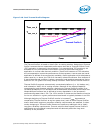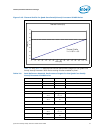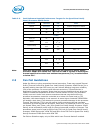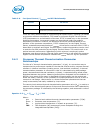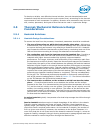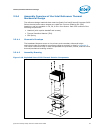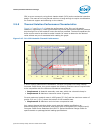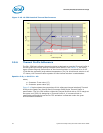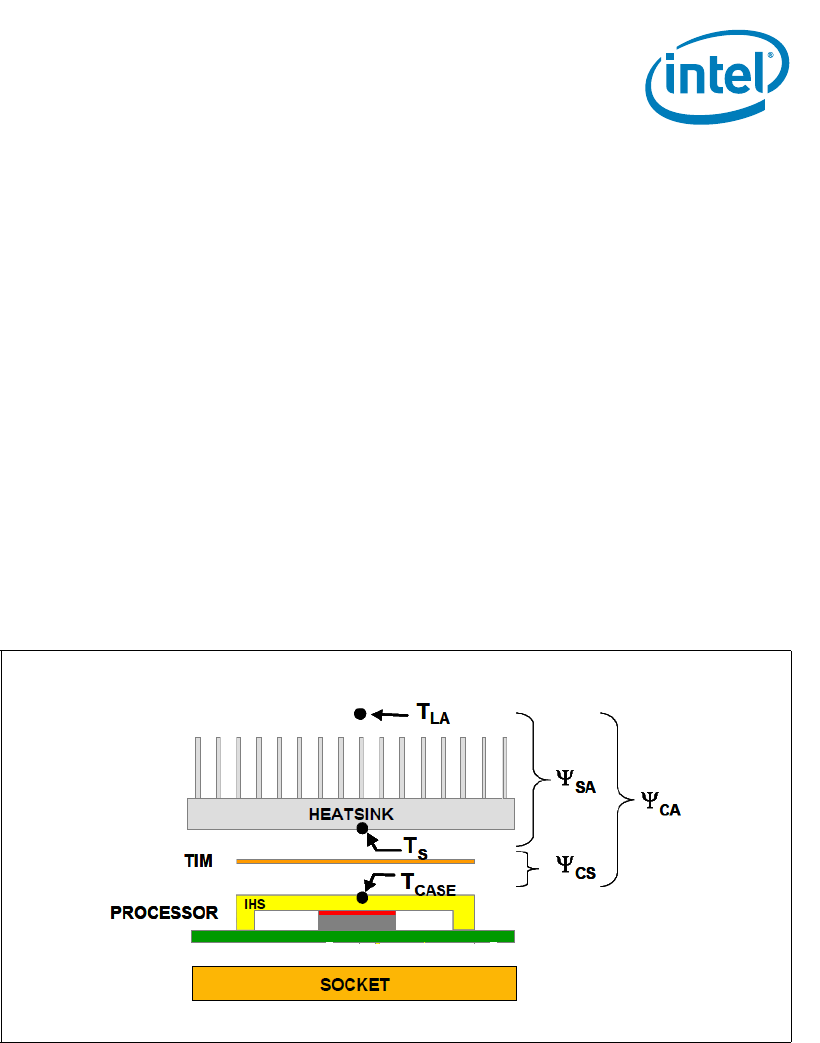
Quad-Core Intel® Xeon® Processor 5400 Series TMDG 35
Thermal/Mechanical Reference Design
The case-to-local ambient thermal characterization parameter of the processor, Ψ
CA
, is
comprised of Ψ
CS
, the TIM thermal characterization parameter, and of Ψ
SA
, the sink-to-
local ambient thermal characterization parameter:
Equation 2-4.Ψ
CA
= Ψ
CS
+ Ψ
SA
Where:
Ψ
CS
= Thermal characterization parameter of the TIM (°C/W).
Ψ
SA
= Thermal characterization parameter from heatsink-to-local ambient
(°C/W).
Ψ
CS
is strongly dependent on the thermal conductivity and thickness of the TIM
between the heatsink and IHS.
Ψ
SA
is a measure of the thermal characterization parameter from the bottom of the
heatsink to the local ambient air. Ψ
SA
is dependent on the heatsink material, thermal
conductivity, and geometry. It is also strongly dependent on the air velocity through
the fins of the heatsink.
Figure 2-15 illustrates the combination of the different thermal characterization
parameters.
2.4.2.1 Example
The cooling performance, Ψ
CA,
is then defined using the principle of thermal
characterization parameter described above:
• Define a target case temperature T
CASE_MAX
and corresponding TDP, given in the
processor datasheet.
• Define a target local ambient temperature at the processor, T
LA
.
The following provides an illustration of how one might determine the appropriate
performance targets. The example power and temperature numbers used here are not
related to any Intel processor thermal specifications, and are for illustrative purposes
only.
Figure 2-15. Processor Thermal Characterization Parameter Relationships



